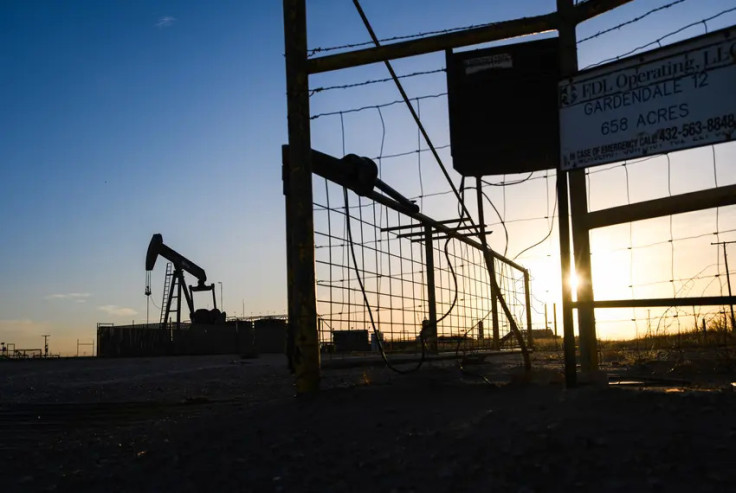
A new report from the Centers for Disease Control and Prevention offers the oil and gas industry, federal workplace regulators and state policy makers a starting point to better understand the fatal risks that come with extraction.
The first-of-its-kind, the study relies on federal workplace data from 2014 through 2019 and was released earlier this month, tracked a total of 470 deaths among industry workers across the U.S. and found that vehicle crashes and being hit by an object while on the job were the leading contributing factors of death.
Other factors that contributed to death include explosions, falls and exposures to harmful substances.
Texas — which is the nation's largest oil producer — leads the U.S. with most deaths, 219, followed by 48 deaths in Oklahoma. The CDC tracked 39 deaths in North Dakota during the same five-year span.
Across Texas, the leading factors to death are similar: 54 people died from being hit by an object on site and 53 people died in vehicle crashes.
The findings offer the first, albeit limited, window into the risks involved in oil and gas extraction, an area of study that researchers at the CDC hope to further investigate. The report is based on data from the Occupational Safety and Health Administration, media reports, and notifications from professional contacts. The authors noted that the data on self-employed workers was limited. The research also does not account for deaths from chronic illnesses contracted from working in the industry. And they also suggest that vehicle-related deaths are underreported due to a lack of federal jurisdiction in tracking those deaths on public roads.
An industry leader in Permian Basin said the report offers evidence that safety regulations are working in Permian Basin, the 55 counties that stretch from West Texas into New Mexico. The region produces about 40% of the nations' oil supply. And according to the new study, had just 30% of the industry-related deaths.
"Industry participants are always trying to do their best to secure and improve working conditions, and while we would rather the number to be zero fatalities over any period of time, I think it's telling that fewer incidents occur in the Permian Basin in comparison to our share of production," said Stephen Robertson, executive vice president of the Permian Basin Petroleum Association. "That, at least, gives me a bit of sense that some safety protocols are being accomplished better here than in other producing regions."
Take for example the Anadarko Basin that covers much of Oklahoma. The CDC tracked 48 deaths — about 10% in the U.S. Meanwhile, it produces just 3% of the nation's oil and gas.
"Our goal is to have zero safety incidents, and we work toward that every day, but work in our industry is challenging and can be dangerous if proper safety protocols are not followed," Robertson said.
The report did not calculate an official death rate, which would compare the total number of deaths to the size of the workforce.
Daniel Foster, owner of Expert Welding, Engineering and Inspection, whose company provides consulting and workplace inspection services, said he was not surprised by the data but more research is needed.
"It's just not unusual," he said, referring to workplace deaths. "There needs to be more oversight."
Foster said the study would be enhanced if it included the total number of workers in each basin. That would help regulators understand trends better. The CDC said it did not have access to the number of workers in each of the fields it examined for the study.
The data appears to confirm one of the facts of life in the Permian Basin: Driving on roads through West Texas is dangerous.
Michael Smith, managing director of the Permian Road Safety Coalition, an organization that researches and consults oil companies and local governments alike on the state of West Texas roads and highways said drivers transporting oil and gas face tough demands.
"In the Permian Basin, you have an industry that moves at the speed of business," Smith said. "That creates a tempo that is very fast, and it translates onto the ground and onto workers that feel the need to push the envelope."
In many instances, Smith said, oil and gas companies hire contract drivers and have little say in their road safety training. And he added he would like to see more collaboration between government partners to improve the general road conditions in West Texas.
Researchers hope the report will provide additional insight into the challenges involved in oil and gas extraction.
"We've heard from the industry that this is a very unique data source, that there isn't tons of publicly available information specific to the industry," said Alejandra Ramirez-Cardenas, one of the report's authors. "And having timely detailed information is crucial for them in their informed decision-making process and health and safety."
*Carlos Nogueras Ramos is a Permian Basin reporter for The Texas Tribune
This article was originally published by The Texas Tribune.




